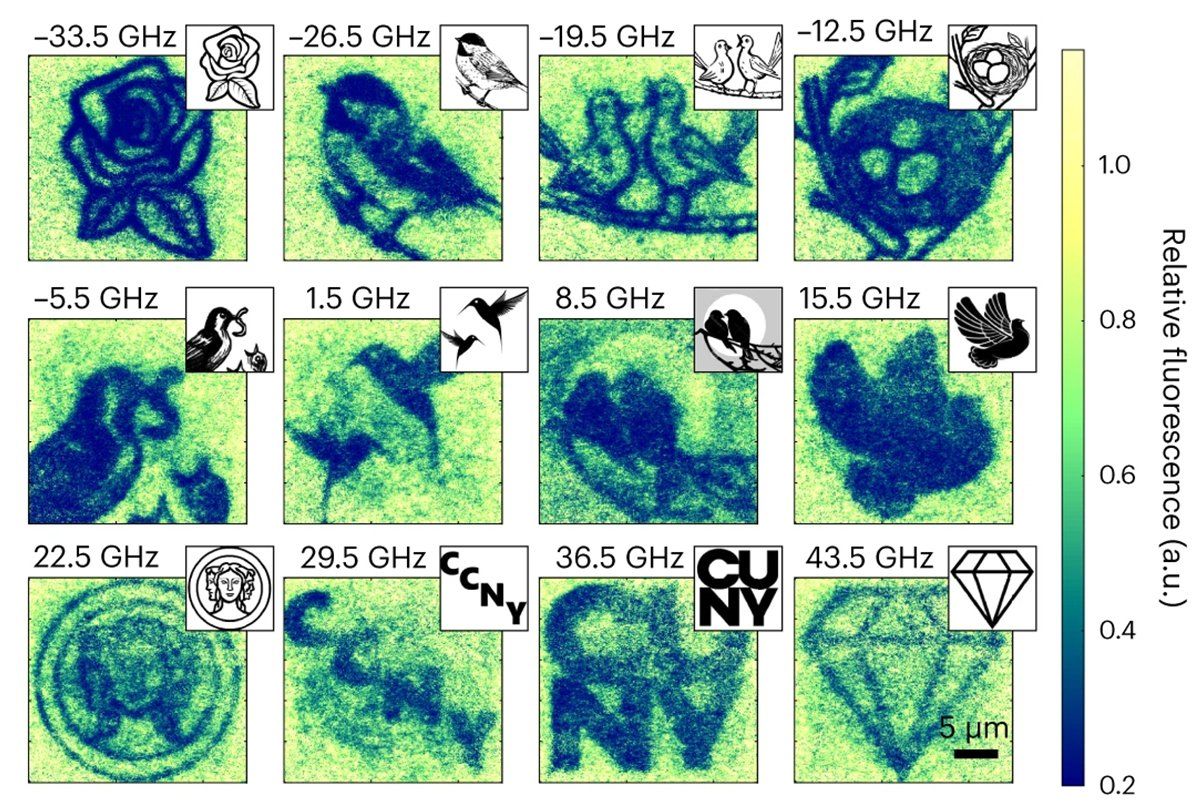The mesmerizing sparkle of diamonds is only a small part of what makes them interesting. Inside a diamond’s intricate lattice of carbon atoms are small defects called color centers that can absorb light and information, making diamonds a promising candidate for optical storage technologies, including for future quantum computers.
However, diffraction effects at the laser wavelengths used to put precise information inside these nanoscale color centers has limited the amount of data that can be stored within the volume of each color center. But in a work recently published in the journal Nature Nanotechnology, researchers have reported a new technique to precisely target individual defects of wide-bandgap semiconductors, such as diamonds, under cryogenic conditions. Using this technique, researchers can also store multiple pieces of information in each defect and even erase and rewrite the information on demand.
Tom Delord is a postdoctoral research fellow at the City College of New York and a co-lead author on the new paper. Delord says that part of the problem he and colleagues were trying to solve is the same obstacle that necessitated the creation of Blu-ray technology.
“Optical technologies in general are limited by diffraction, meaning the minimum diameter you can focus light is half its wavelength,” Delord says. “A typical strategy to enhance the data density of an optical memory is to reduce the wavelength, for example [shifting it blue] with Blu-ray technology. But even at short wavelengths, the beam is very large compared with the distance between atoms able to store information.”
The big question, Delord says, is how to address “hundreds or thousands of atoms” individually within the same beam of light.
Richard Monge is a postdoctoral researcher at the City College of New York and a co-lead author on the new paper. He says that identifying different resonances emitted by individual defects was key to achieving a new kind of optical density.
“In this new work we found, at cryogenic temperature, that although several atomic defects share the same diffraction-limited spot, they exhibit slightly different “resonances” which can be excited selectively via a special narrow laser,” Monge says. “This enabled us to individually address specific point defects without disturbing others within the same laser spot.”
Essentially, these different resonances represent small changes in wavelength between color centers, Delord says, which allowed the researchers to target them individually using a very narrow laser beam.
In addition to storing unique information in each defect, this technique can also further improve optical density by storing information in three dimensions instead of two by changing the laser’s plane of focus. These techniques also allow for users to easily erase and rewrite data encoded in these defects, a trait that Blu-ray technology lacked but is becoming increasingly important, Delord says.
“It’s a different paradigm—it means you can keep using the same hardware to update your data or store new data instead of throwing it away,” Delord says. “Nowadays, with broadband Internet, the majority of data storage is done on rewritable hardware.”
Even with these advances, the technique still won’t be enough to improve the density of optical storage on a practical level—at least not until it’s brought up to room temperature, Delord says. If the technology can be made to work at warmer temperatures, it could play an important role in long-term or heavy data storage.
In the meantime, these techniques could be useful for quantum technologies that are already kept at extra cool temperatures, Delord says.
“[This method] has applications beyond data storage—in particular what is called ‘quantum technologies,’ such as quantum sensing and quantum computing,” Delord says. “We are already applying our findings to quantum sensing, where single atoms are used to sense minute magnetic or electric fields with high resolution…We also think our observations will help us with entangling two color centers very close to each other, which is a fundamental step necessary to develop a quantum-computing platform.”
Through these quantum applications and future applications at warmer temperatures, the researchers believe they could also uncover important dynamics about the movement of charges in diamonds and other semiconductors in general, opening the door for an even greater understanding of these technologies in the future.
Sarah Wells is a science and technology journalist interested in how innovation and research intersect with our daily lives. She has written for a number of national publications, including Popular Mechanics, Popular Science, and Motherboard.



